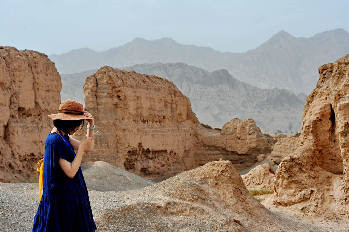 |
|
Subash used to be one of the largest Buddhist temples in Xinjiang. [Photo by Yu Xiangjun] |
Subash Temple saw its heyday during the Tang Dynasty (618-907) when it was home to 10,000 monks and received numerous pilgrims. It welcomed legendary monk Xuanzang, who was on a journey west from the then capital Chang'an to ancient India in the 630s. He stayed in Subash and preached there for over two months. In his travelogue Great Tang Records on the Western Regions, Xuanzang described the natural scenery of Subash and the endless stream of devout pilgrims who journeyed there. However, at some point during the 13th to the mid-14th centuries, the temple was abandoned.
Unoccupied for about 1,000 years, the ruins still amaze visitors. Against the backdrop of the open and vast desert, crumbling pagodas are bathed in the golden beams of sunshine. They tell us of past glory.
Example of Central Asian Earth Ruins
For about 1,000 years, Subash Temple had great significance in China's Western Regions and played a pivotal role in cultural communication between East and West. The ruins are highly regarded for their historical, artistic, scientific, and social value. The temple's construction utilized various typical techniques that can be seen in earthen ruins of arid Northwest China and even in Central Asia.